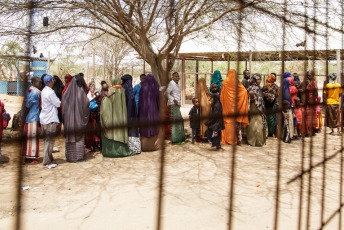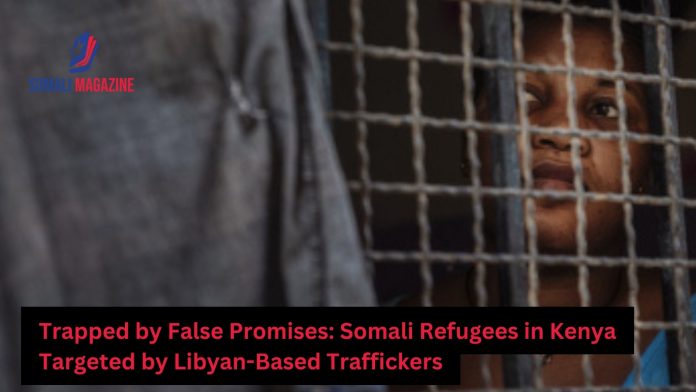Facebook Twitter (X) Instagram Somali Magazine - People's Magazine
A growing human trafficking network is exploiting Somali refugees in Kenya, luring them into dangerous journeys with false promises of reaching Europe. Investigations reveal that traffickers operating from Libya have established recruitment channels within Kenya’s refugee camps, particularly in Dadaab, where vulnerable youth are being deceived into embarking on perilous migration routes.
Authorities have uncovered a sophisticated operation that preys on refugees desperate for a better future. The traffickers, using social media platforms like TikTok and WhatsApp, convince their targets that they can secure safe passage to Europe. However, many victims end up trapped in Libya, facing harsh conditions, forced labor, and extortion.
The recruitment process begins with traffickers isolating individuals and warning them against informing family members about their plans. Once convinced, victims are turned into recruiters themselves, persuading peers to join the journey. The traffickers cover all expenses, making the offer seem irresistible to those struggling with limited opportunities in refugee camps.

Kenyan authorities have identified key routes used by the trafficking syndicate. The most common paths involve transit through South Sudan and Chad before reaching Libya. The ongoing war in Sudan has forced traffickers to adjust their routes, but the ultimate destination remains the same—Libya, where migrants are often detained or sold into forced labor.
Security agencies in Nairobi are actively investigating cases linked to the trafficking ring, with efforts underway to track down recruiters operating within Kenya. Officials warn that the syndicate is highly organized, making it difficult to dismantle without coordinated international action.
Human rights organizations have raised alarms over the worsening situation, calling for urgent intervention to protect refugees from exploitation. The United Nations and regional bodies have been urged to strengthen anti-trafficking measures and provide safer migration alternatives for those seeking opportunities abroad.
The crisis highlights the broader challenges facing Somali refugees in Kenya, who continue to grapple with limited access to education, employment, and legal pathways for migration. As authorities work to curb trafficking networks, the focus remains on safeguarding vulnerable individuals from falling prey to false promises and dangerous journeys.

